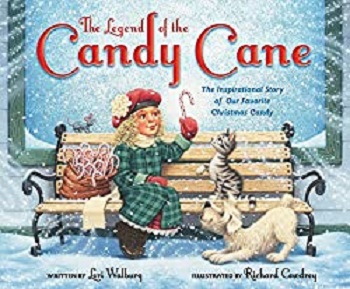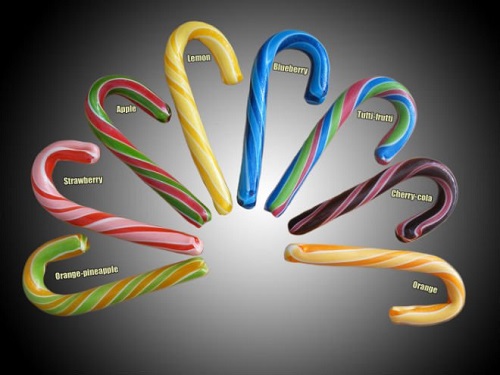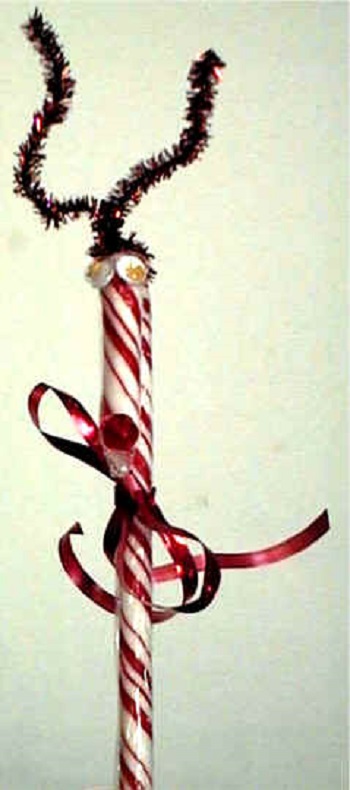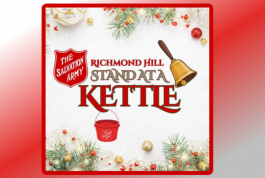Candy canes are so Christmas. Like so many Christmas traditions they have a nearly unfathomable history, that goes back to Germany.
In 1670, the choirmaster at Cologne Cathedral in Germany needed to keep the children quiet so he asked a candy maker for some "sugar sticks". He thought it best if the candy maker to add a crook to the top of each stick, which would help children remember the shepherds, so legend goes.
Another guess at the origin of the hook on this popular white stick was to make it easier for them to be hung on Christmas trees.
By 1847 it is thought the candy cane made it to the U.S. There is a story of a German-Swedish immigrant, decorating a small blue spruce with paper ornaments and candy canes. They were just white.
It was difficult to mass produce a coloured candy cane with a hook.
Based on historical Christmas cards no striped candy canes appeared prior to the year 1900. Candy makers did add the red colour soon after and the peppermint flavour. Gregory Keller invented the machine to automate candy cane production in the 1950s
When the stripe got added more legends about the candy cane appeared. The stripes were to be
- a secret code among persecuted Christians in Germany or England in the 17th century
- a secret language amongst the Christian faithful depending on the stripe—three represented the trinity
- represented the blood of Jesus.
There are cute little books “The Legend of the Candy Cane”, often used in a Sunday School class.

The story tells of a Candy maker in Indiana who wanted to make a candy that would help us remember who Christmas is really about. So he made a Christmas Candy Cane. He incorporated several symbols for the birth, ministry, and death of Jesus Christ.
He began with a stick of pure white, hard candy. White to symbolize the virgin birth and sinless nature of Jesus. Hard candy to symbolize the solid rock, the foundation of the Church, and firmness of the promises of God.
The candy maker made the candy in the form of a “J” to represent the name of Jesus. It also represented the staff of the “Good Shepherd”.
The candy maker then included red stripes. He used three small stripes and a large red stripe to represent the suffering Christ endured at the end of his life. The peppermint flavor represented the use of hyssop, a herb referred to in the Old Testament.
We can now get the candy cane in all colours and flavours. Including peanut butter, bacon, mac & cheese, clam, wasabi, Sriracha ... Click HERE for the top 25 flavours Of Candy Canes.
I like the good ‘ole peppermint flavour best. Peppermint has some substantial health benefits including aiding in gastrointestinal discomfort, curbing cravings, easing headaches, relieving stuffy noses, and of course, freshening breath. :)
With having some extra time this holiday season would you want to make your own candy canes?
Here's a recipe:
Ingredients:
3 c. Sugar
1 tsp. Peppermint flavoring
1/2 c. Water
3/4 c. Light corn syrup
3/4 tsp. Red vegetable coloring
1/4 tsp. Cream of tartar
Directions:
Combine sugar, water, syrup, and cream of tartar and heat until the sugar is dissolved. Divide into two saucepans, boil, but don’t stir until each lot is 280 F. Add 1/2 tsp peppermint to each lot and add the coloring to one. Place on an enamel or marble oiled table to cool. Stretch and pull and form into ropes of red and white, now twist them around again and again. Form them into a cane shape. Let harden.
Maybe you just want to decorate candy canes. I remember getting these for presents from my kids.

And what is the proper way to eat a candy cane? Surveys have found about three out of four people think that starting at the straight end is the "proper" way to eat a candy cane.
Nearly two billion candy canes will be sold in the four weeks before Christmas.
The biggest candy cane ever made was 51 feet long.
National Candy Cane Day is December 26, at least in the United States. It is the day that candy canes are to be crushed and incorporated into other recipes.








